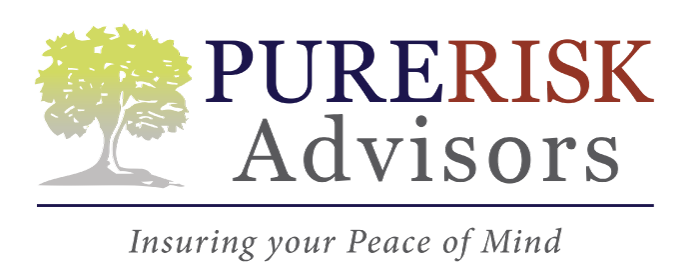OSHA Requirements Explained: What Colorado Construction Companies Must Know
See How We're Different
or call us: 303-834-1001
Construction sites are among the most hazardous workplaces in the country. In 2023, the industry faced a grim milestone with 1,075 fatalities-the highest since 2011. For Colorado construction companies, understanding and complying with OSHA regulations is not just about avoiding penalties. It is about protecting lives and fostering a culture of safety that benefits workers and businesses alike. This article breaks down the essential OSHA requirements and recent developments that every Colorado construction firm should know to stay compliant and safe.
Understanding OSHA’s Focus on Construction Safety
The Occupational Safety and Health Administration (OSHA) has long prioritized construction safety due to the sector’s high risk. One key area of concern is fall protection, which was the most frequently cited OSHA standard in 2022. Falls remain a leading cause of injury and death on construction sites, making compliance with these standards critical.
OSHA’s Construction Focused Inspection Policy highlights the agency’s approach to inspections. It rewards contractors who have implemented effective safety and health programs, encouraging others to follow suit. This policy not only enforces compliance but also promotes proactive safety management, which can reduce incidents and improve overall site conditions.
For Colorado companies, this means that maintaining a robust safety program can lead to fewer inspections and better recognition. In fact, 16 Colorado employers were honored by OSHA in June 2023 for recording zero worker injuries and illnesses in 2022. This achievement demonstrates that with the right commitment, construction sites can operate safely and productively. Learn more about OSHA’s recognition programs here.
The Rising Importance of Proper PPE Fitting
Another critical OSHA requirement is the proper use and fitting of personal protective equipment (PPE). Recent rules emphasize that PPE must fit correctly to provide the intended protection. Ill-fitting equipment can fail to prevent injuries, even if workers wear it consistently. Colorado construction companies should prioritize training and regular checks to ensure all PPE meets OSHA standards and fits workers properly.
Proper PPE fitting goes beyond helmets and gloves. Respirators, harnesses, and eye protection need particular attention. Investing in quality PPE and fitting sessions can reduce injury rates and demonstrate a company’s commitment to worker safety. Moreover, it is important to consider the unique needs of each worker. For instance, individuals with different head shapes may require various helmet sizes or styles to ensure a secure fit. Regular training sessions can also help workers understand the importance of PPE and how to properly wear and maintain their equipment, fostering a culture of safety on the job site.
Furthermore, the selection of PPE should consider the specific hazards present in different construction environments. For example, in areas with high levels of dust or chemical exposure, specialized respirators may be necessary. Similarly, when working at heights, the choice of harnesses and lanyards can significantly impact a worker's safety. By tailoring PPE to the specific risks of a project, companies can enhance their safety protocols and protect their workforce more effectively. This proactive approach not only complies with OSHA regulations but also instills confidence among workers, knowing that their safety is a top priority.
Electronic Injury and Illness Reporting: What’s New for 2024
Starting January 1, 2024, OSHA requires employers in certain high-hazard industries, including construction, to submit injury and illness data electronically. This change aims to improve transparency and allow OSHA to identify risks more quickly.
For Colorado construction firms, this means updating recordkeeping systems and ensuring timely, accurate reporting. Electronic submission helps OSHA track trends and target interventions where they are most needed. It also encourages companies to maintain thorough documentation of workplace injuries and illnesses.
While compliance may involve upfront costs, OSHA estimates that the construction industry will spend about $659 million annually on compliance efforts. This investment can pay off by reducing costly incidents and improving safety culture. More details on the new reporting rule can be found at Watkins Insurance Group.
Why Accurate Reporting Matters
Accurate injury and illness reporting is not just a regulatory requirement. It helps companies identify hazards before they cause serious harm. Studies show that complaint-driven inspections, which often rely on reported data, are linked to a 17.3% reduction in subsequent incidents. This means that transparent reporting can lead to safer workplaces and fewer tragedies.
Moreover, the implications of accurate reporting extend beyond mere compliance. By fostering a culture of safety and accountability, organizations can enhance employee morale and trust. Workers are more likely to report unsafe conditions if they believe their concerns will be taken seriously and lead to meaningful change. This proactive approach not only mitigates risks but also cultivates a more engaged workforce, ultimately driving productivity and reducing turnover rates.
In addition, as the construction industry increasingly embraces technology, electronic reporting can streamline the data collection process. Advanced software tools can automate the tracking of incidents, making it easier for employers to analyze patterns and implement preventative measures. This shift towards digital solutions not only simplifies compliance but also empowers organizations to make data-driven decisions that enhance overall workplace safety.
Key OSHA Standards Every Colorado Construction Company Should Follow
Several OSHA standards are especially relevant for construction sites in Colorado. Knowing these inside and out helps companies avoid citations and, more importantly, protect their workers.
Fall Protection
Fall hazards are everywhere on construction sites—scaffolds, ladders, roofs, and elevated platforms. OSHA requires employers to provide fall protection systems when workers are at heights of six feet or more. These systems include guardrails, safety nets, and personal fall arrest systems.
Given that fall protection was the most frequently cited OSHA standard in 2022, companies should regularly inspect equipment and train workers on proper usage. Fall prevention saves lives and reduces downtime caused by accidents. Additionally, implementing a comprehensive fall protection plan tailored to the specific site conditions can further enhance safety. This plan should include regular safety meetings, clear communication of fall hazards, and the use of technology such as safety harnesses equipped with fall indicators. By fostering a culture of safety, companies not only comply with regulations but also boost morale and productivity among their workforce.
Hazard Communication
Construction workers often handle hazardous materials such as solvents, adhesives, and paints. OSHA’s Hazard Communication Standard mandates that employers inform workers about chemical hazards through labels, safety data sheets, and training. Proper communication reduces the risk of exposure and long-term health problems.
Moreover, it is essential for employers to conduct routine training sessions that go beyond the initial onboarding process. These sessions should cover the proper handling, storage, and disposal of hazardous materials, as well as emergency procedures in case of spills or exposure. Engaging workers in discussions about the chemicals they encounter daily can empower them to take ownership of their safety. Additionally, using visual aids and multilingual resources can help ensure that all workers, regardless of their language proficiency, understand the risks and necessary precautions associated with hazardous materials.
Electrical Safety
Electric shocks and burns are common construction injuries. OSHA requires strict adherence to electrical safety protocols, including grounding, lockout/tagout procedures, and use of insulated tools. Colorado companies must ensure that electrical systems are installed and maintained by qualified personnel and that workers receive proper training.
Furthermore, it is vital to conduct regular audits of electrical systems and equipment to identify potential hazards before they lead to accidents. This proactive approach can include checking for frayed wires, ensuring that circuit breakers are functioning correctly, and verifying that all electrical installations comply with the National Electrical Code (NEC). Training should also encompass recognizing the signs of electrical hazards and understanding the importance of maintaining a safe distance from live wires. By creating a robust electrical safety program, companies can significantly reduce the risk of electrical incidents, ensuring a safer work environment for all employees.
Building a Culture of Safety: Beyond Compliance
Compliance with OSHA rules is the baseline. The most successful Colorado construction companies go further by fostering a culture where safety is everyone’s responsibility. This approach leads to fewer incidents, better morale, and stronger business results. By emphasizing a collective commitment to safety, these companies create an environment where workers feel empowered to speak up about potential hazards, leading to proactive measures rather than reactive solutions.
Effective safety programs include regular training, open communication channels, and incentives for safe behavior. OSHA’s Construction Focused Inspection Policy encourages contractors who demonstrate these practices by reducing inspection frequency and recognizing their efforts publicly. Furthermore, integrating safety into daily operations ensures that it becomes a natural part of the workflow, rather than an afterthought. Regular safety meetings, toolbox talks, and hands-on training sessions can reinforce the importance of safety and keep it top of mind for all employees.
Investing in safety also means embracing technology. Wearable devices, site sensors, and digital checklists can help monitor hazards in real time. These tools provide actionable data that companies can use to prevent accidents before they happen. For instance, wearable technology can track workers' movements and fatigue levels, alerting supervisors to potential risks before they escalate. Additionally, utilizing drones for site inspections can help identify unsafe conditions from a bird’s-eye view, allowing for timely interventions.
Recognizing Excellence in Safety
Colorado’s 16 employers who achieved zero injuries and illnesses in 2022 set a high standard. Their success shows that safety and productivity can go hand in hand. Companies looking to improve can study these examples and adopt similar safety management systems. OSHA’s recognition programs provide motivation and resources to help companies reach these goals. These exemplary organizations often share their best practices through workshops and seminars, fostering a community of learning that benefits the entire industry.
Moreover, the recognition of these companies serves as a powerful reminder that safety is not just a regulatory requirement but a core value that can drive business success. By celebrating achievements in safety, companies can inspire others to prioritize their own safety initiatives. This ripple effect can lead to a more robust safety culture throughout the construction industry, ultimately resulting in fewer accidents and a healthier workforce. Engaging employees in safety discussions and recognizing their contributions can further enhance this culture, making safety a shared goal that everyone is invested in achieving.
Cost Considerations and Compliance Strategies
Compliance with OSHA regulations involves costs-both direct and indirect. The construction industry is expected to spend $659 million annually on compliance measures. These costs include PPE, training, inspections, and administrative efforts related to electronic reporting.
While the price tag may seem high, the cost of accidents is often far greater. Worker injuries lead to medical expenses, lost productivity, increased insurance premiums, and potential legal liabilities. Proactive safety management reduces these risks and can improve a company’s bottom line. Moreover, investing in safety not only protects workers but also enhances the company's reputation, making it more attractive to clients who prioritize safety and compliance in their project bids.
Colorado construction companies should approach compliance strategically by:
- Conducting regular safety audits to identify gaps
- Investing in worker training focused on high-risk tasks
- Implementing technology to streamline reporting and hazard detection
- Engaging workers in safety discussions to encourage ownership
Additionally, companies can benefit from establishing a culture of safety that permeates all levels of the organization. This involves not only training but also recognizing and rewarding safe practices among employees. By fostering an environment where safety is prioritized, organizations can see a significant reduction in incidents and a corresponding increase in employee morale and productivity. Furthermore, leveraging data analytics to track safety performance can provide insights into trends and areas needing improvement, allowing for more informed decision-making regarding safety investments.
Another critical aspect is the integration of mental health resources into safety programs. The construction industry often faces high-stress levels and mental health challenges, which can contribute to accidents and decreased productivity. By addressing mental well-being alongside physical safety, companies can create a more holistic approach to compliance and risk management, ultimately leading to a safer and more productive workplace for everyone involved.
Frequently Asked Questions
Q: What are the most common OSHA violations in construction?
A: Fall protection is the most frequently cited violation, followed by issues with hazard communication and electrical safety. These violations often stem from a lack of training or awareness among workers about the potential hazards they face on the job site. For example, improper use of scaffolding or ladders can lead to serious accidents, making it imperative for companies to invest in comprehensive training programs that emphasize safe practices and the importance of adhering to OSHA regulations.
Q: How can Colorado companies prepare for OSHA inspections?
A: Maintain up-to-date safety programs, ensure proper PPE use, keep accurate injury records, and train workers regularly on OSHA standards. Additionally, conducting mock inspections can help identify potential issues before the official visit. Engaging employees in safety meetings and encouraging them to voice concerns can foster a culture of safety, making it easier to spot and address hazards proactively. Regular audits of safety equipment and procedures can also ensure compliance and readiness for any inspections.
Q: What does OSHA’s electronic injury reporting requirement mean for my company?
A: Starting in 2024, you must submit injury and illness data electronically, which requires accurate recordkeeping and timely reporting. This shift aims to enhance transparency and accountability within workplaces, allowing OSHA to better track safety trends across industries. Companies will need to invest in training staff on the new reporting systems and ensure that all injury data is collected consistently. This transition may also necessitate upgrades to existing software systems to facilitate seamless reporting and compliance.
Q: Are there benefits to having zero injuries on record?
A: Yes. OSHA recognizes companies with strong safety records, which can lead to fewer inspections and better reputation. Furthermore, a zero-injury record can be a powerful marketing tool, attracting clients who prioritize safety and reliability. Companies may also experience lower insurance premiums and reduced costs associated with workplace accidents, such as medical expenses and lost labor. This commitment to safety not only enhances workplace morale but also contributes to a more productive workforce.
Q: How important is PPE fitting on construction sites?
A: Proper PPE fitting is crucial. Ill-fitting equipment can fail to protect workers, increasing the risk of injury. For instance, hard hats that are too loose may fall off during a fall, while gloves that are too tight can hinder dexterity, making it difficult for workers to perform tasks safely. Companies should conduct regular assessments to ensure that all PPE fits correctly and is appropriate for the specific tasks being performed. Additionally, providing a variety of sizes and styles can help accommodate the diverse needs of the workforce.
Q: What role do complaint-driven inspections play in safety?
A: They help identify hazards early and have been linked to a 17.3% reduction in subsequent workplace incidents. These inspections can serve as a wake-up call for employers to address safety concerns that may have been overlooked. By responding to complaints promptly, companies can not only rectify specific issues but also demonstrate their commitment to maintaining a safe work environment. Furthermore, fostering open communication channels where employees feel comfortable reporting hazards can significantly enhance overall workplace safety culture.
What to Remember
Colorado construction companies face significant challenges in maintaining OSHA compliance, but the rewards are clear. Effective safety programs save lives, reduce costs, and build stronger businesses. Staying informed about OSHA’s evolving rules-especially regarding PPE fitting and electronic reporting-is essential.
Focusing on fall protection, hazard communication, and electrical safety addresses the most common risks. Beyond rules, fostering a culture of safety and learning from companies recognized for zero injuries can elevate your site’s safety standards. Investing in compliance is investing in your workforce’s future and your company’s success.
For more detailed insights on construction safety trends and regulations, visit
ISHN and explore OSHA’s official construction compliance resources
here.













